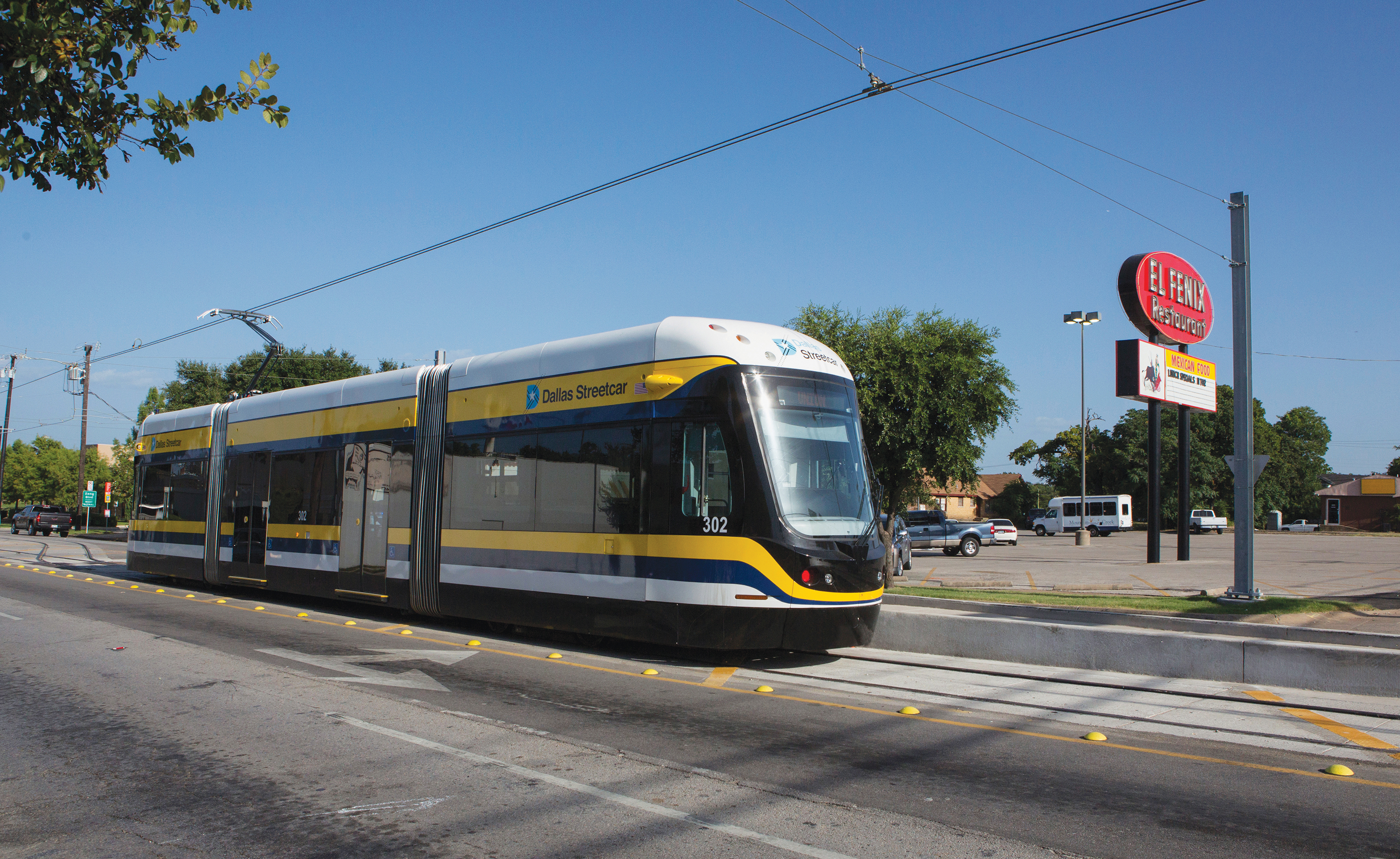Oak Cliff’s Streetcar has been around since 2013, created, as our Peter Simek describes here, when a group of urbanists forced the city’s hand:
All the typical transportation powers-that-be — the North Central Council of Governments, the city, DART — thought this new generation of streetcar nuts were hapless hipster dreamers. Nonetheless, the Oak Cliff streetcar nerds applied for a TIGER grant from the federal government and won it. That essentially twisted the arms of the city and region to start thinking about streetcars.
It started out free to riders. And then a long time ago—like, 2018—Council put forth a resolution to break that tradition, charging $1 per ride. At the time, a DART spokesperson told the Dallas Morning News that “we’re still working out the details on timing.” April will be two years since that quote. The trolley has remained free.
Now, the city has a renewed debate. Popping up on last week’s Council agenda was an item to pay DART the city’s standard yearly maintenance and operations fee for the streetcar, about $1.6 million. (The nonprofit McKinney Avenue Transit Authority operates the Uptown trolley, counting among its sponsors Uptown Dallas Inc., Downtown Dallas Inc., and DART.) Estimated to bring in less than $150,000 a year, Council viewed the small fare less about money and more about making sure one part of the city doesn’t have a transit luxury others don’t. Seeing that none of the city’s responsibility has yet been offset by the fare, South Oak Cliff Council member Carolyn King Arnold pressed about why. The trolley does not reach South Oak Cliff.
Council was told it was a timing issue, that DART is not resistant, merely delayed, but that the agency has promised the technology will be up and running by September. (Council member Tennell Atkins smartly asked staff to find the document where DART made that promise, assumedly so Council could hold them to it.) But then, a conversation broke out about using tax increment financing district funds from the Oak Cliff Gateway TIF District to cover the city’s $1.6 million. This, in theory, would assuage equity concerns, because the money is coming directly from the neighborhood that benefits. It remains to be seen whether Council would support slashing the fare should TIF funds be introduced, a point largely left for future debate, although West Dallas Council member Omar Narvaez was all for it.
The question is whether the TIF board, which has its own, established set of priorities, would approve. Economic Development Director Courtney Pogue did not seem hopeful they would, and in an email, Economic Development District Manager Sue Hounsel says the city is currently exploring “all possible options to address this issue before presenting to any TIF board (if that becomes necessary).”
If not as an ad hoc solution, using TIFs to pay for trolleys could make sense on a broader scale, particularly if and as the city looks to expand its network to something that ties more neighborhoods together, says Patrick Kennedy, an urban planner and member of DART’s board. “In that sense,” Kennedy says, “I like the idea of both a small fare and a much larger TIF to build out a network of streetcar lines that link Cedars, West Dallas, East Dallas, etc. to downtown and to each other.”
Last week we had a downtown streetcar subcommittee meeting. I sketched this to show that w/ 2 line extensions (purple) to the 2 existing lines (yellow) and 2 new lines (red), we can link all 8 surrounding neighborhoods to downtown and each other. pic.twitter.com/I21kb9oFXp
— patrick kennedy (@WalkableDFW) July 30, 2018
Kennedy doesn’t dismiss the dollar fare as a money maker. Monthly ridership of the Oak Cliff streetcar has steadily grown and notched over 20,000 during the latter half of 2019. If those numbers were to remain steady after introduction of a fare, the trolley would bring in around $240,000, not insignificant cash toward expanding the line. “My primary motivation is useful transit that people find it worthy to pay a few dollars for,” says Kennedy. As for what has taken DART so long to institute the fares on the Oak Cliff Streetcar, he says he posed the question several months back and has yet to receive a clear answer.
For now, city staff will eventually bring their explorations back to the Council’s Transportation and Infrastructure Committee, which is chaired by Lee Kleinman, one of several Council members who voiced support for funding the streetcar through the TIF.
“If it benefits a particular part of town, let the tax increment that comes out of that part of town pay for it,” he says. “I’m just looking for a different bucket of money.”





